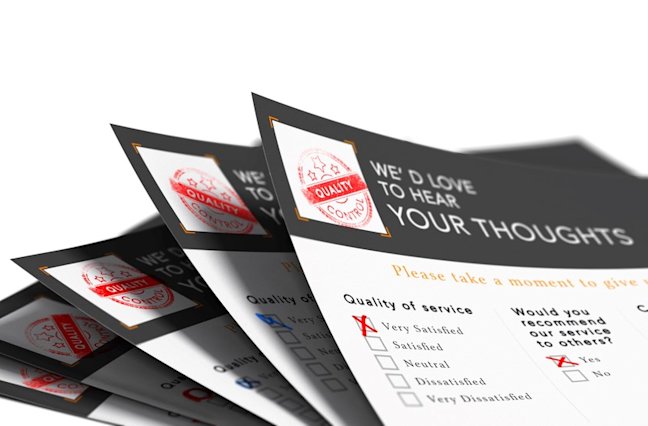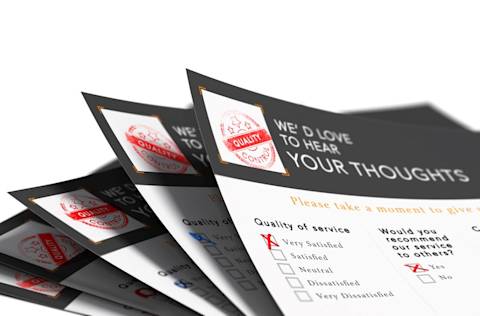The Cobra Effect of CX: Why containment is the wrong metric in AI voice automation
Learn why organizations must escape the containment metric trap when it comes to AI voice automation and AI agents, instead shifting focus to deliveri...
Solutions
Products
Ingest omnichannel customer interactions, from audio and screens to surveys, for complete visibility and analytics.
AI virtual agents, real-time multilingual translation, and event-based customer feedback drive smarter, personalized CX initiatives.
Customers
Solutions
Products
Customers
Resources
Company
The Team at CallMiner
April 22, 2020


As businesses race to define customer needs in ever greater detail while aligning their own market offerings to better cater to them, the importance of gathering intelligence from customers grows significantly.
Voice of the Customer or “VOC” is a technological approach to gaining insight into consumers’ collective interests. More specifically, through the use of Voice of the Customer technology, organizations can identify customer needs and organize them by relative importance.
Voice of the Customer technology helps in establishing operational courses of action and defining crucial elements of product/service design early on. Through its use, business decisions can be closely matched to verified customer needs.
Such a process yields excellent results for businesses that harness it correctly; however, there are numerous ways to go about implementing a VOC strategy within an organization. To better understand how VOC processes work and precisely how you can set them in motion within your own company’s systems it helps to have examples and structural resources at hand.
Below, we describe the VOC process in detail and provide you with a few useful templates and examples of the functions that comprise such a system.
To deploy a comprehensive Voice of the Customer system, organizations should aim to implement each of eight distinct functions. These functions are essentially stages in the VOC information handling process, leading from target setting to ongoing study. They are as follows:
This phase of the VOC process marks the starting line by working out the “why” and “what”.
In addition to defining exactly who your customers are and defining their profiles, companies should use this opportunity to define the inner workings of their own product development team. Defining decision makers early can help in ironing out the rest of the VOC process.
Here, various tools are chosen and put to use in collecting information from customers. It is important to decide on the kind of information you need to collect in addition to the ways in which you intend to go about collecting it. The two major types of data you will encounter in VOC are qualitative and quantitative (descriptive labels and numbered metrics).
One collection tool that helps in narrowing down target customers to interview is a VOC matrix. This tool is essentially a series of fields that you can select based on your project’s goals. Once selected, these fields combine to form a clear description of your target audience. Specialized software can offer the same functionality as a traditional hole-punched VOC matrix if your organization keeps accurate customer profile data in digital formats.
Although the information captured during the collection phase of the VOC process is labeled, it might not be particularly usable until it is accurately interpreted.
Interpreting collected data involves translating raw customer input into actionable language. Once done, designers, developers and project leads can assess the information and take immediate action. Specifically, desires expressed by customers should be translated to long-term needs to gain a clearer perspective on a project’s ideal developmental roadmap.
Achieving a usable data structure boils down to minimizing redundancies and grouping related information intuitively. AI-based VOC sorting solutions can prove to be tremendously helpful for such purposes.
For information on ways to measure the voice of the customer, download our white paper, Measuring Voice of the Customer.
A clear example of the way in which data might be intuitively structured for later use is a simple tree diagram. This diagram arranges information in connected levels of branches to give context to each bit of data.
At this stage of the VOC process, structured information should be rated by its importance or end-user utility. This allows for insignificant data to be dropped in lieu of data representing more pressing concerns.
Cross-referencing data sets occurs at this stage. Doing so ensures the veracity of any conclusions your team may reach after analyzing the information your VOC system yields.
At this point, the Voice of the Customer data has been collected, organized and verified, but must be weaved into your organization’s development plans to be of use. This may involve setting specific technical requirements for product designs, establishing varied pricing models for subscription services, etc.
Keeping up with sudden shifts in market sentiment should be a top priority and actively interpreting new VOC data makes this possible. Changes in customer needs over time can be worked into future development goals to keep your offerings closely tied to their intended markets.
Voice of the Customer provides businesses with unique insights that can be used to imbue future development goals with premeditated purpose. By using VOC technology, your organization can not only listen more attentively to its clientele, but respond to their requests and suggestions in meaningful, profitable ways.
How has your business leveraged Voice of the Customer technology?
CallMiner is the global leader in AI-powered conversation intelligence and customer experience (CX) automation. Our platform captures and analyzes 100% of omnichannel customer interactions delivering the insights organizations need to improve CX, enhance agent performance, and drive automation at scale. By combining advanced AI, industry-leading analytics, and real-time conversation intelligence, we empower organizations to uncover customer needs, optimize processes, and automate workflows and interactions. The result: higher customer satisfaction, reduced operational costs, and faster, data-driven decisions. Trusted by leading brands in technology, media & telecom, retail, manufacturing, financial services, healthcare, and travel & hospitality, we help organizations transform customer insights into action.